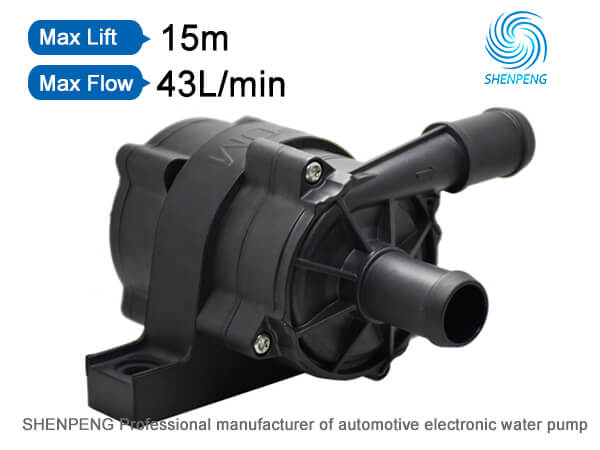In the small water pump market, 12V water pumps are highly favored for their portability, low power consumption, and wide range of applications. This type of water pump is commonly used in various industries such as the automotive, household appliance, and industrial/energy storage sectors. Understanding the specifications and parameters of a 12V water pump, especially key indicators such as power, flow rate, and head, is crucial for selecting the appropriate water pump.

1. Power
Power is a physical quantity that measures the speed at which a water pump does work, usually expressed in watts (W). For 12V water pumps, their power generally ranges from a few watts to several hundred watts, such as the common models of water heating mattress water pump P4002 (2.2W), water heater water pump P6077 (36W), and car water pump P8018 (220W). The higher the power, the stronger the pumping capacity of the water pump, but correspondingly, its energy consumption will also increase. When choosing a water pump, it is necessary to balance the relationship between power and energy consumption according to actual needs.
2. Traffic
Flow rate refers to the amount of water that a pump can deliver per unit time, commonly expressed in liters per minute (L/min) or cubic meters per hour (m ³/h). For a 12V water pump, its flow range generally ranges from a few liters/minute to over ten liters/minute. For example, the water flow rate of the water pump P4002 for water heating mattresses is 5L/min, while the water pump P8018 for cars can reach 62L/min. The flow rate directly affects the pumping speed and efficiency of the water pump, so the selection should be based on actual needs.
3. Lift
Head is the ability of a water pump to overcome gravity and raise the water flow upwards, commonly expressed in meters (m). It reflects the ability of a water pump to raise the height of water or overcome pipeline resistance when pumping. The head range of a 12V water pump is generally between 2-20 meters, depending on factors such as pump power, design, and pipeline conditions. The higher the head, the more difficult it is for the pump to pump water, and correspondingly, its flow rate will also decrease. Therefore, when choosing a water pump, it is necessary to comprehensively consider the actual head and flow requirements used.
4. Other key parameters: In addition to power, flow rate, and head, there are other key parameters worth noting for a 12V water pump:
1) Voltage: The working voltage of the 12V water pump is 12V DC, and some products also support 24V voltage to meet the needs of different occasions.
2) Pressure: The pressure of a water pump refers to the water pressure at its outlet, usually expressed in megapascals (MPa). Different models of water pumps have different pressure ranges to meet different application scenarios.
3) Self suction capability: Some 12V water pumps have self-priming function, which can absorb water on their own without external water intake, improving the convenience of use.
4) Material and durability: The material of the water pump directly affects its durability and service life. Water pumps made of high-quality materials are more stable and reliable, and can adapt to various harsh environments.
conclusion
In summary, the specifications of a 12V water pump include multiple aspects such as power, flow rate, and head, which together determine the performance and applicability of the pump. When choosing a water pump, it is necessary to consider the actual needs comprehensively to ensure that the selected water pump can meet the usage requirements and have good performance. At the same time, during use, attention should also be paid to following the operating instructions and precautions to extend the service life of the water pump and ensure safe use.
Address:No.30, Dapu lndustrial Street, Changping, Dongguan, Guangdong, China
Tel: +86-186 7628 8117